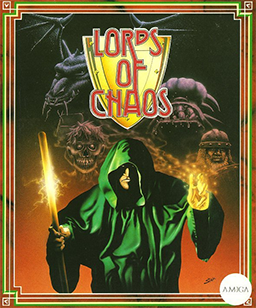
Lords of Chaos is a turn-based tactics tactical role-playing game published by Blade Software in 1990. It is the sequel to Chaos and an ancestor of the popular X-COM series of games, also written by Julian Gollop. In Lords of Chaos each player controls a wizard who can cast various magic spells. The spells have various effects, for example summoning other creatures, or damaging opposing creatures and wizards. The game can be played against a computer-controlled opponent or by up to four human players.

Laser Squad is a turn-based tactics video game, originally released for the ZX Spectrum and later for the Commodore 64, Amstrad CPC, MSX, Amiga, Sharp MZ-800 and Atari ST and PC computers between 1988 and 1992. It was designed by Julian Gollop and his team at Target Games and published by Blade Software, expanding on the ideas applied in their earlier Rebelstar series. Laser Squad originally came with five mission scenarios, with an expansion pack released for the 8-bit versions, containing a further two scenarios.

Turrican is a 1990 video game developed by Manfred Trenz. It was developed for the Commodore 64 by Rainbow Arts, and was ported to other systems later. In addition to concept design and character creation, Trenz programmed Turrican on the Commodore 64. A sequel, Turrican II: The Final Fight, followed in 1991 for the Commodore 64 and other platforms.

Dalek Attack is a 1992 computer game based on the long-running British science fiction television series Doctor Who, in which the player controls the Doctor and fights recurring adversaries, the Daleks and other enemies. In most versions of the game, the player can choose between playing as the Fourth, Fifth or Seventh Doctor; in the MS-DOS and Amiga versions, the player can play as the Second, Fourth or Seventh Doctor, and in the ZX Spectrum version only the Seventh Doctor was available. A second player may play as the Doctor's companion. K-9 also makes appearances later in the game as does Davros, creator of the Daleks in the TV series, as the final end of level boss. The game is set in London, Paris, New York, Tokyo and Skaro.
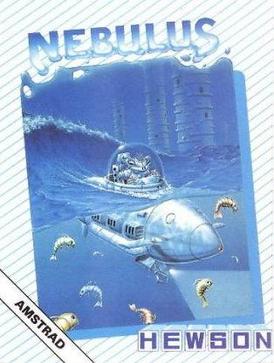
Nebulus is a platform game created by John M. Phillips and published by Hewson Consultants in the late 1980s for home computer systems. International releases and ports were known by various other names: Castelian, Kyorochan Land, Subline, and Tower Toppler.

Kwik Snax is an arcade style maze video game play developed by the Oliver Twins and was published in 1990 by Codemasters for the Amstrad CPC, Spectrum, Commodore 64, MS-DOS, and Amiga. It was the fifth game in the Dizzy series and is considered a sequel to Fast Food.

Exolon is a run and gun game programmed by Raffaele Cecco and published by Hewson in 1987 for the ZX Spectrum, Commodore 64, and Amstrad CPC. It was later converted to the Enterprise 128, Amiga, and Atari ST.

Cybernoid: The Fighting Machine is a shoot 'em up developed and published in 1988 by Hewson Consultants for the ZX Spectrum. It was ported to the Amstrad CPC, Atari ST, Commodore 64, Amiga, and Nintendo Entertainment System. It was programmed by Raffaele Cecco. The ZX Spectrum, Amstrad, and Atari ST versions have a main theme by Dave Rogers, while the Commodore C64 version has a different theme by Jeroen Tel.

Knightmare is a video game released by Activision in 1987 for ZX Spectrum, Amstrad CPC, Commodore 64, and Atari ST. It was written by Mev Dinc, J.P. Dean, E.M. Dean and Nick Cooke, and is based on the Anglia Television show Knightmare. Four years later, Mindscape released entirely different game based on the show, also called Knightmare, for the Atari ST and Amiga.

X-Out is a horizontally scrolling shooter with eight levels set underwater. It was released by Rainbow Arts in 1989 for the Commodore 64, and in 1990 for the Amiga, Atari ST, ZX Spectrum, and Amstrad CPC.
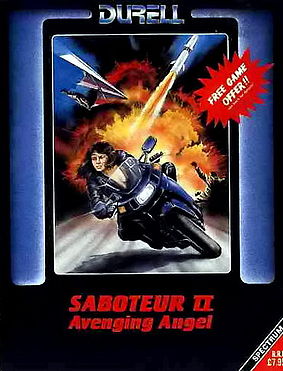
Saboteur II: Avenging Angel, also known as Saboteur 2, is an action-adventure game created by Clive Townsend and released by Durell Software in 1987 for the ZX Spectrum, Amstrad CPC, Commodore 64, and MS-DOS compatible operating systems. A sequel to 1985's Saboteur, the player controls a sister of Ninja from the first game on a mission to avenge his death. Saboteur II was one of the first action-adventure games with a female protagonist and was well received by critics.

Storm Warrior is a 1989 beat 'em up video game developed and released by Elite Systems for the Amstrad CPC and Commodore 64 8-bit home computer systems. The game casts the player in the role of a prince on a quest to rid his kingdom of a witch's curse. It is unrelated to the 1984 game Storm Warrior.
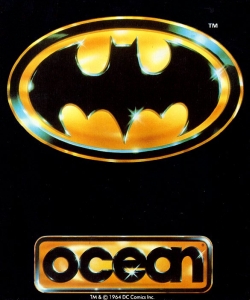
Batman is an action video game developed and published by Ocean Software based on the 1989 film of the same name. It was released on 11 September 1989 for the Commodore 64 and ZX Spectrum with Amiga, Amstrad CPC, Atari ST, MS-DOS and MSX versions following soon after.

The Real Ghostbusters is a 1987 shoot 'em up arcade game developed and published by Data East. It is loosely based on Ghostbusters. In Japan, Data East released it as a non-Ghostbusters arcade game under the title Meikyuu Hunter G. In 1989, Activision published The Real Ghostbusters for Amiga, Amstrad CPC, Atari ST, Commodore 64, and ZX Spectrum.
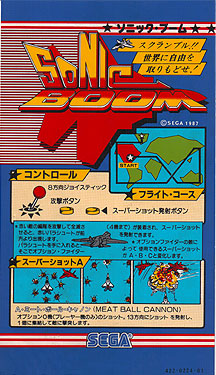
Sonic Boom is a vertical scrolling shooter developed by Sega and released in the arcades in 1987. Home computer versions for the Amiga, Atari ST, Amstrad CPC, Commodore 64 and ZX Spectrum were released in 1990 by Activision. The original arcade version was released on the Sega Astro City Mini console in 2021.

Ghostbusters II is a 1989 action game based on the film of the same name. It was published by Activision for various computer platforms. British studio Foursfield developed a version for Commodore 64, Amiga, Atari ST, Amstrad CPC and ZX Spectrum, which also got ported to the MSX by New Frontier. It features three levels based on scenes from the film. Dynamix developed a separate version for the DOS, also based on the film. The non-DOS versions were praised for the graphics and audio, but criticized for long loading times, disk swapping, and the final level. The DOS, Commodore 64 and Amiga versions were the only versions released in North America.
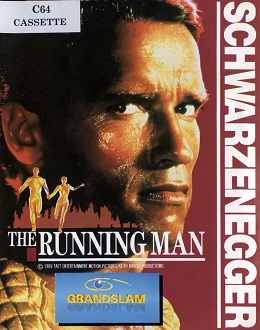
The Running Man is a 1989 beat 'em up video game based on the 1987 film of the same name. It was developed by Emerald Software and published by Grandslam Entertainments for Amiga, Amstrad CPC, Atari ST, Commodore 64, and ZX Spectrum.

Terminator 2: Judgment Day is a 1991 action video game developed by Dementia and published by Ocean Software. It is based on the 1991 film of the same name, and was released in Europe for Amiga, Amstrad CPC, Atari ST, Commodore 64, DOS, and ZX Spectrum. It is a sequel to The Terminator, itself based on the 1984 film of the same name. The game features several gameplay styles such as driving, fighting, and puzzle-solving.

Judge Dredd is a 1991 platform shoot 'em up video game based on the character of the same name. It was developed by Random Access and published by Virgin Mastertronic. It was released in Europe in 1991, for the Amiga, Atari ST, Commodore 64, and ZX Spectrum. Critics found the gameplay repetitive.
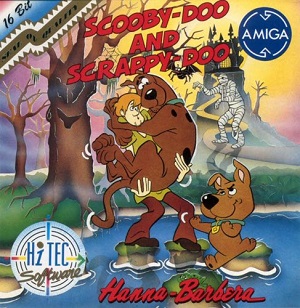
Scooby-Doo and Scrappy-Doo is a 1991 platform game developed by British studio PAL Developments and published by Hi-Tec. It is part of the Scooby-Doo franchise, and was released in Europe for Amiga, Amstrad CPC, Atari ST, Commodore 64, and ZX Spectrum. The game received praise for its graphics.




















